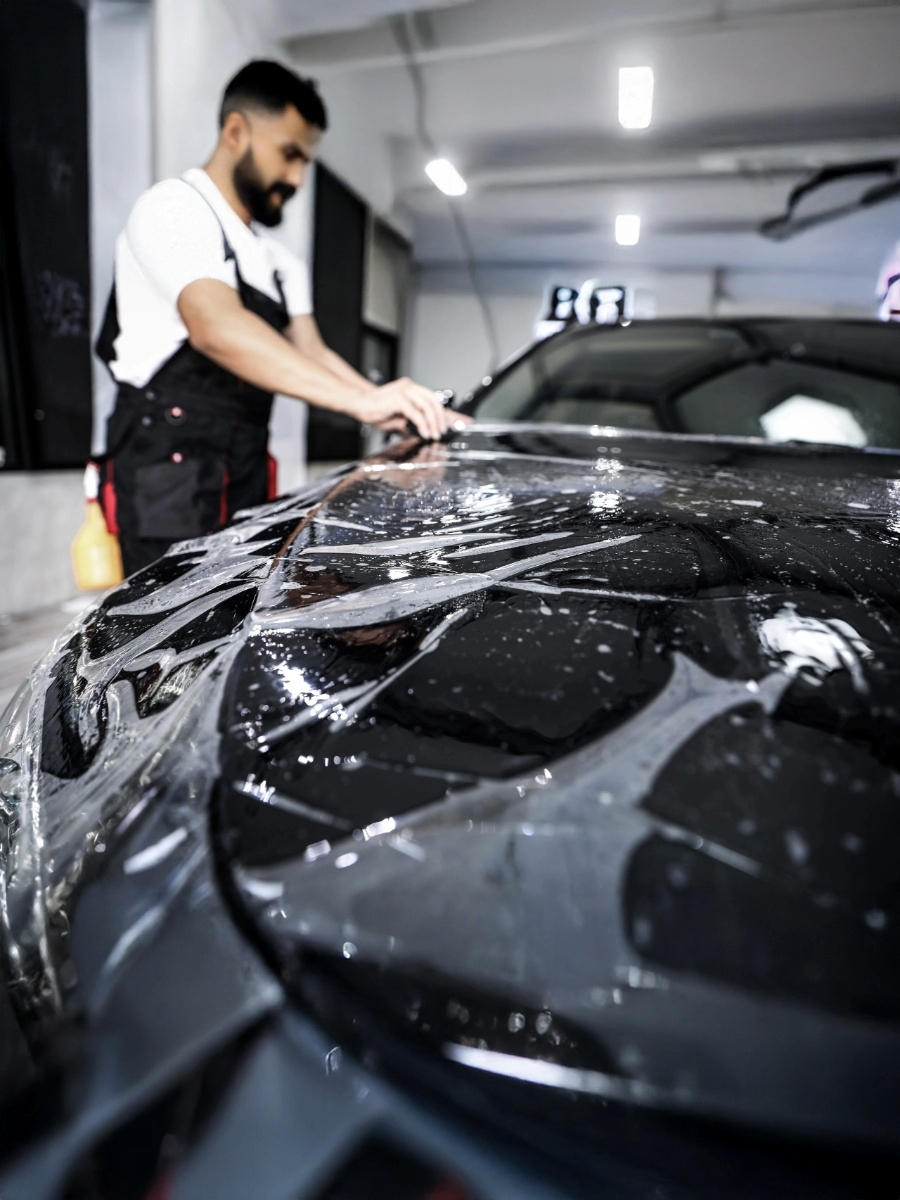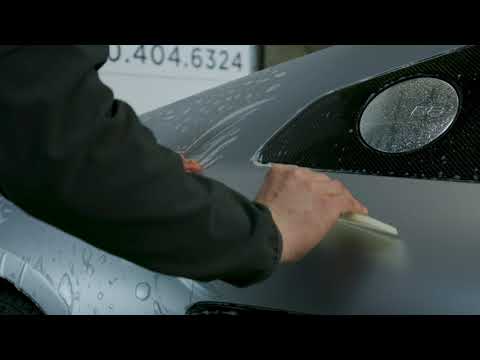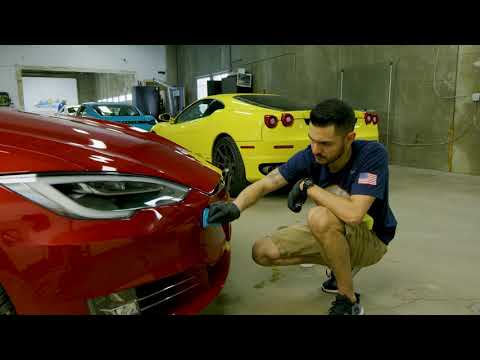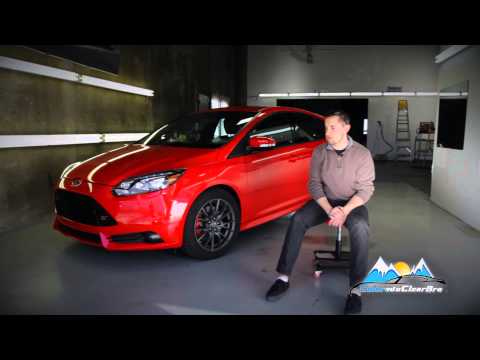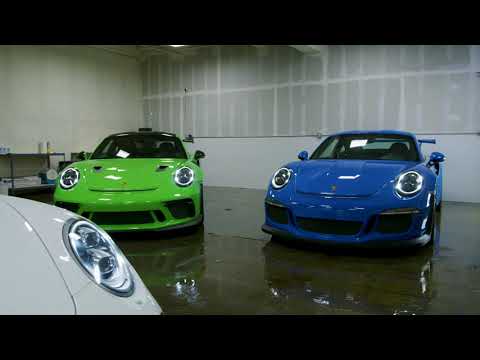Every year, people spend over $5 billion on products to keep their cars looking new. Among these, a standout innovation has emerged: self-healing paint protection film (PPF). It offers unique advantages in self-healing paint protection film compared to traditional PPF, which has its limitations. Let's explore the differences between self-healing PPF vs. traditional PPF, their benefits, and the technological advancements that make self-healing PPF a top choice for maintaining your car's shine as good as new.
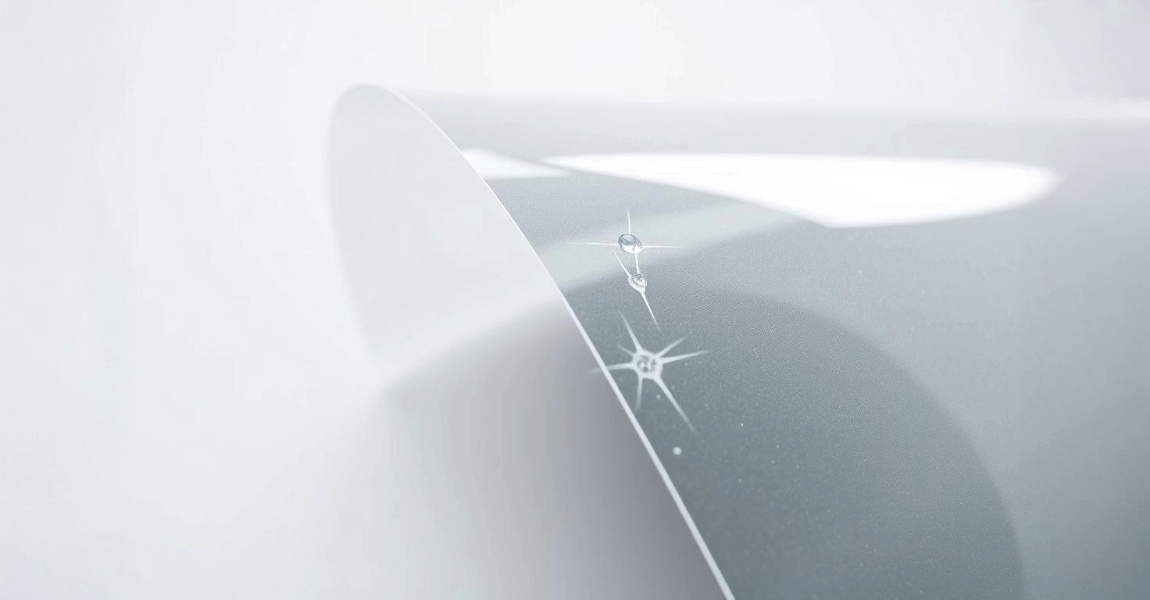
Table of Contents
- Introduction to Paint Protection Film (PPF)
- What is Self-Healing PPF?
- Understanding Traditional PPF
- Self-Healing PPF vs. Traditional PPF
- Benefits of Self-Healing PPF
- Traditional PPF Drawbacks
- Comparison of Self-Healing PPF and Traditional PPF
- Self-Healing PPF Effectiveness
- Which PPF is Better for Your Vehicle?
- Self-Healing vs. Traditional PPF Cost Analysis
- Contact Colorado Clear Bra
- Conclusion
- FAQ
Key Takeaways - Self-Healing PPF vs. Traditional PPF
- Understand the fundamental differences between self-healing and traditional paint protection films.
- Discover the advancements that confer self-healing PPF its superior protection features.
- Discover the benefits of self-healing paint protection film and how it enhances vehicle maintenance.
- Discover the traditional PPF drawbacks and their potential impact on vehicle aesthetics and protection.
- Gain insight into a thorough comparison of self-healing PPF and traditional PPF to make an informed decision for your vehicle.
Introduction to Paint Protection Film (PPF)
Paint Protection Film, also known as a clear bra or PPF, is crucial for maintaining a car's appearance. It protects cars from damage and keeps them looking great for an extended period. The introduction of self-healing PPF changed the game. It offers benefits that surpass those of the old PPF.
In the past, PPF was primarily used to shield cars from rock chips, scratches, and sun damage. Yet, it had issues, such as turning yellow and not healing on its own. This made people want something better. Then came self-healing PPF. It utilizes new technology to repair itself from minor damage caused by everyday use.
PPF evolved from just protecting cars to also enhancing their appearance. It helps cars keep their value. The move to self-healing PPF shows how the market recognizes its benefits. It also shows the need to improve on older films.
| Feature | Traditional PPF | Self-Healing PPF |
|---|---|---|
| Self-Repair Mechanism | None | Yes, responds to heat |
| Protection from Scratches | Basic | Advanced |
| Longevity & Aesthetic Maintenance | Limited by yellowing | Extended, without discoloration |
Understanding modern paint protection, such as self-healing PPF, is crucial. It's essential for anyone looking to protect and enhance their car's exterior. These advances set new standards for protection films. They also meet growing consumer demands for long-lasting and easy-to-maintain products.
What is Self-Healing PPF?
Self-healing paint protection film (PPF) is a top-notch automotive care innovation. It shields a car's exterior from damage and can fix itself. This enhances the effectiveness of self-healing PPF significantly over older types.
Definition and Overview
Self-healing PPF is a special film for cars. It keeps the paint safe from chips, bugs, and light scratches. It features a special layer that seals itself with heat, eliminating damage.
Technology Behind Self-Healing PPF
This PPF is designed to work with special polymers that stretch and return to their original shape. Heat from sunlight or warm water makes it heal. No action is needed; the issue will resolve itself. This makes it super simple for car owners to keep their cars looking new.
Key Features of Self-Healing PPF
Self-healing PPF is impressive for many reasons. It keeps cars looking great for longer. Here are some key points:
- Outstanding scratch and stain resistance
- High gloss finish that enhances the car's appearance
- Resistance to yellowing from UV exposure
- Adaptability to various climates and temperatures
When thinking about which PPF is better, the self-healing PPF is less of a hassle. It reduces the need for frequent fixes. Many car enthusiasts and professionals consider it a top choice for maintaining cars in excellent condition.
Understanding Traditional PPF
Newer technologies, such as self-healing PPF, have emerged, but traditional PPF continues to play a key role in protecting vehicles. It's essential to understand what traditional PPF is composed of and the type of protection it provides. We also need to consider its cost and the potential downsides that car owners might face.
Components and Composition
Traditional PPF is mainly made from polyurethane. This plastic is known for being stretchy, clear, and tough against wear and corrosion. Due to its composition, it can prevent damage from small road debris, helping to keep cars free from chips, scratches, and other minor harm.
Durability and Protection Offered
Traditional PPF acts as a strong shield against the elements and daily wear and tear, helping to preserve the car's original paint. Yet, it's not perfect. One significant issue is that it can turn yellow or peel after some time, especially in harsh weather conditions. Additionally, it can't repair minor marks or light scratches, which can affect the car's appearance.
| Attribute | Traditional PPF | Self-Healing PPF |
|---|---|---|
| Material | Polyurethane | Advanced Polyurethane with Self-Healing Properties |
| Protection Level | High (from physical impacts) | Higher (from impacts and minor abrasions) |
| Lifespan | 5-7 Years | 10+ Years |
| Maintenance Required | Regular | Minimal |
| Cost | Lower Initial Investment | Higher Initial Investment, but Lower Long-term Cost |
Traditional PPF may be cheaper initially than more advanced options. However, its benefits can diminish over time due to maintenance and durability issues. Car owners must consider both immediate costs and long-term effects when deciding how to protect their vehicle.
Self-Healing PPF vs. Traditional PPF
Choosing between self-healing PPF and traditional PPF puts car owners in a spot. Do they opt for newer technology or prioritize saving money? Self-healing paint protection films can repair themselves with heat, maintaining their shine for an extended period. However, traditional PPF cannot repair itself and may turn yellow or peel over time.
Deciding which PPF is better for your car takes comparing them. Self-healing PPF not only fixes itself but also blocks more damage from UV rays and road dirt. It's great for those who want their car to look new with little effort. However, traditional PPF costs less upfront and may be suitable for those saving money or not concerned about the car's appearance later.
| Feature | Self-healing PPF | Traditional PPF |
|---|---|---|
| Scratch Repair | Yes, heals with heat exposure | No, permanent unless replaced |
| Lifespan | 7 to 10 years | 5 to 7 years |
| Maintenance | Minimal | Regular maintenance needed |
| Initial Cost | Higher | Lower |
| Overall Protection | Superior against UV rays and debris | Basic protection |
| Finish | High-gloss, superior optical clarity | May degrade over time (yellowing, peeling) |
For more insights into their pros and cons, consider detailed comparisons, such as those provided by Colorado Clear Bra.
Benefits of Self-Healing PPF
Exploring the benefits of self-healing PPF shows why it's special in car care. It's strong and uses smart tech. It gives vehicle owners top-notch paint protection.
This film resists scratches and marks caused by everyday use. It 'heals' with heat from the sun or warm water. This makes keeping your car looking new easy.
Self-healing PPF reduces long-term car maintenance costs. It protects paint from dirt and minor scratches. This keeps your car looking good longer, without frequent fixes.
Enhanced Scratch and Swirl Resistance
A significant advantage of self-healing PPF is its ability to resist scratches and swirls effectively. Traditional films can wear down, but self-healing PPF fixes itself. It returns to normal after damage.
Self-Repair Capabilities Under Heat
Heat activates the self-healing layer, addressing surface issues. This means minor marks from driving or parking are less of a bother.
Longevity and Maintenance Benefits
The benefits of self-healing PPF extend beyond aesthetics. It keeps the paint fresh and shiny, unlike other films that turn yellow. So, it needs just simple cleaning, no complicated care.
Traditional PPF Drawbacks
Traditional Paint Protection Film (PPF) is often chosen to protect car exteriors. Yet, a closer look reveals significant drawbacks that may deter buyers. These include being easily damaged, unable to self-heal, and the challenges with upkeep and replacing them.
Vulnerability to Scratches and Marks
A key weakness of traditional PPF is its susceptibility to scratches and marks. These flaws are not just an eyesore; they also weaken the film's protection. Unlike newer options, traditional PPF can't repair itself, meaning any damage is permanent unless a professional fixes it.
Lack of Self-Repair Features
Traditional PPF doesn't have self-healing tech. Therefore, when it gets scratched, the damage remains unless the film is replaced. This is in sharp contrast to newer versions, which can repair minor scratches with just a bit of heat from the sun or the engine.
Maintenance and Replacement Concerns
Maintenance and replacement concerns mean traditional PPF needs more work and money over time. You should check regularly to ensure it continues to function correctly. Replacing it means spending more and having your vehicle out of use, which adds to the overall cost during a car's lifetime.
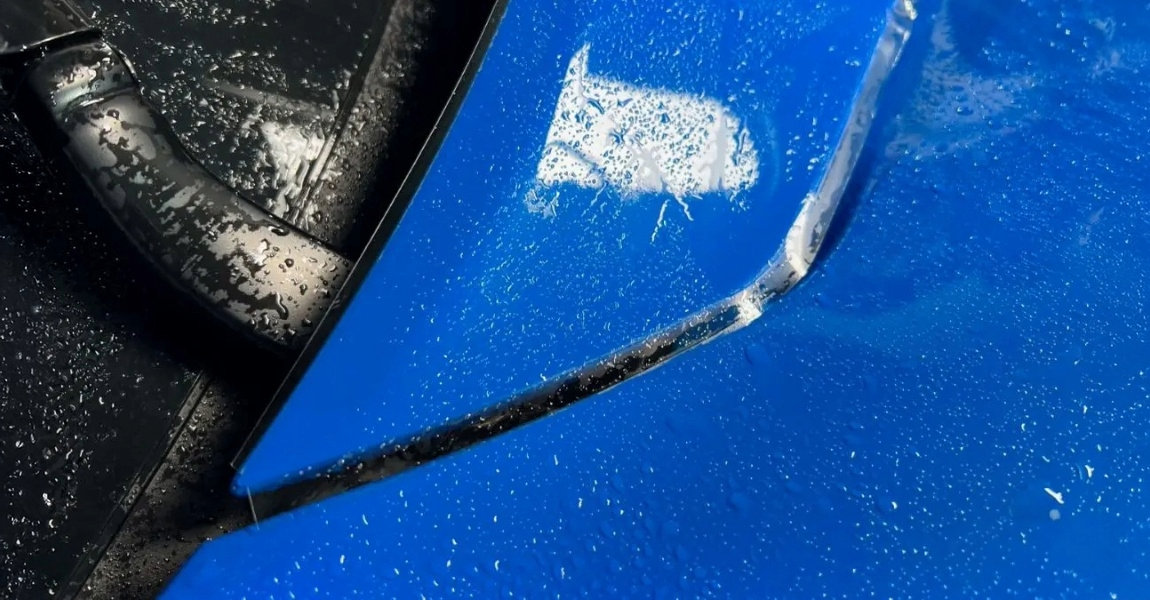
These drawbacks make it essential for buyers to carefully consider their choices, weighing initial costs against the benefits and future expenses. This is why many choose newer films that heal themselves, for better durability and less trouble later on.
Comparison of Self-Healing PPF and Traditional PPF
Choosing between self-healing and traditional paint protection films involves considering the cost efficiency over time and performance in various climates. Self-healing and traditional PPF have their pros and cons. These factors influence how well they maintain your car's appearance and reduce the need for upkeep.
Cost Efficiency Over Time
Initially, self-healing PPF is more expensive than traditional PPF. Yet, its value shows as the car ages. This is due to its high-tech nature. It reduces the need for repairs or replacements due to scratches or environmental damage. So, car owners spend less on upkeep over time.
Performance in Various Climates
Self-healing PPF stands out for its ability to handle different weather conditions. It provides strong protection against harsh sun and cold weather. Traditional PPF is less effective in withstanding changes in temperature, which can cause it to crack and peel. Therefore, it might need to be replaced more often. The ability of self-healing PPF to self-repair in high temperatures is a key benefit, making it superior in changing climates.
Appearance and Aesthetic Impact
The appearance of a vehicle is significant to its owners. Self-healing PPF keeps cars looking newer for longer by fixing small swirls and scratches on its own. This keeps the car's finish shiny and flawless. It helps maintain the car's beauty and value.
In summary, picking between self-healing and traditional PPF should be based on their long-term performance and cost-effectiveness. Self-healing PPF may cost more initially, but it can lead to greater savings and fewer problems in the long run. This makes it a wise choice for maintaining your car's top condition and ensuring it retains its value.
| Feature | Self-Healing PPF | Traditional PPF |
|---|---|---|
| Initial Cost | Higher | Lower |
| Maintenance Cost Over Time | Lower | Higher |
| Durability in Extreme Climates | Excellent | Moderate |
| Aesthetic Maintenance | Superior Self-Repair | Regular Care Needed |
Self-Healing PPF Effectiveness
The effectiveness of self-healing PPF depends on its performance in real-life applications. It also examines users' opinions through consumer feedback and ratings. This way, we gain a better understanding of how effective these protective films are in protecting against daily damage and environmental factors compared to older methods.
Real-World Performance Scenarios
Evaluating self-healing PPF involves examining its performance under various real-world scenarios. These situations include being in high heat, getting hit by gravel and road debris, and surviving minor accidents. This helps us understand how well it can repair itself. When the film gets scratched or damaged, either the sun's warmth or applied heat can make it heal. This allows the film to look as good as new again.
Case studies from users show a big drop in how much they spend on maintenance and how often they need to replace the film, thanks to its self-healing traits.
Consumer Feedback and Ratings
User opinions are crucial for understanding how well self-healing PPF performs. Ratings help highlight how satisfied people are with it and the benefits they see. High scores typically indicate that the film does an excellent job of protecting a car's paint, maintaining its appearance for an extended period, and that the film itself has a long lifespan.
- Customers are happier because they don't have to maintain their cars as much.
- Good reviews often highlight how the film maintains its appearance, keeping the car looking good without requiring any adjustments.
- Some complaints are about how this PPF is more expensive than traditional ones. Yet, the higher initial cost is offset by the reduced need for repainting later.
Considering both technical tests and user feedback, self-healing PPF appears to be a significant step forward in protecting cars. It meets the demands of modern drivers who value both their car's appearance and usability. The combination of expert analysis and real-world user stories continues to build support for this technology, leading to its increasing acceptance and adoption.
Which PPF is Better for Your Vehicle?
Choosing the right paint protection film (PPF) for your car is essential. Consider how you use your car, where it goes, and your budget. This section examines whether a self-healing PPF or a traditional one is more suitable for you. We'll consider both short-term and long-term effects.
Considering Vehicle Type and Use
Consider which PPF is better suited for your car based on its intended use. If you often drive in harsh conditions or face a lot of road debris, a self-healing PPF is a good pick. It fixes minor scratches and marks on its own, which is excellent for luxury cars or those in shows.
Assessing Budget and Long-Term Value
Comparing the costs of self-healing PPF and traditional PPF is key for those watching their budget. Self-healing PPF may be more expensive initially, but it's a worthwhile investment. It needs fewer replacements and fixes. This keeps your car looking better for longer, potentially increasing its resale value.
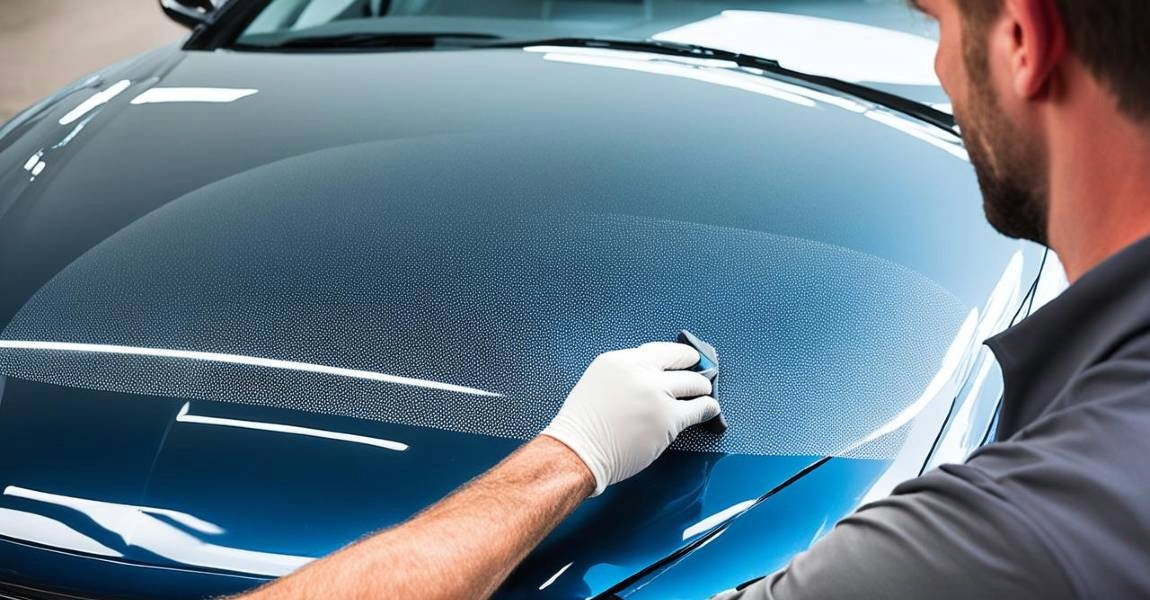
Consider the initial cost versus the savings on upkeep and future replacements. For cars with minimal wear, traditional PPF may be sufficient. It offers protection without the extra cost of fixing itself.
Ultimately, whether you opt for a self-healing PPF or a traditional one depends on how you use your car, your style, and your budget. It's about giving your car the best care and protection for as long as you have it.
Self-Healing vs. Traditional PPF Cost Analysis
When selecting paint protection for your car, cost is a significant factor. This review examines the financial aspects of self-healing PPF compared to traditional PPF. We'll see the upfront costs and the benefits over time.
Initial Installation Costs
The cost of applying self-healing PPF is usually higher than that of traditional PPF. This is because self-healing PPF uses special tech. It can fix its minor scratches and marks.
Long-Term Investment and Savings
Looking at the long-term investment and savings, self-healing PPF stands out. It lasts longer and requires minimal maintenance. This means you don't have to replace it as often. Here’s a look at how much you might save over time:
| PPF Type | Average Cost of Installation | Expected Lifespan | Estimated Maintenance Costs over 5 Years |
|---|---|---|---|
| Traditional PPF | $750 | 3-5 years | $200 |
| Self-Healing PPF | $1000 | 5-7 years | $0 |
The table shows that self-healing PPF costs more at first. However, it saves money in the long term by reducing maintenance costs. This makes it a wise choice for those who want to protect their car and save money in the long run.
Contact Colorado Clear Bra
Ready to boost your vehicle's protection? Contact Colorado Clear Bra to explore top-notch paint protection films. Our experts are ready to give your car the attention it needs. This ensures it stays beautiful and strong against the elements.
At Colorado Clear Bra, we offer both self-healing and traditional PPF. We customize it to meet your car's specific needs. Our certified pros use advanced tech to apply protection. It also enhances your car's appearance.
Call us at 720-404-6324 or visit our location to get started. We'll talk you through the options. We help you choose the best PPF for your car and your taste.
Count on Colorado Clear Bra for leading car protection. Join our happy customers who trust us with their cars. We keep them looking great, no matter the year.
Conclusion
We've looked at the differences between self-healing PPF and traditional PPF. Self-healing PPF stands out with its ability to fix scratches on its own. This makes it an excellent choice for those who want to keep their vehicle looking new. Its cutting-edge technology helps the car self-repair, making it last longer and easier to maintain.
However, we also examined the drawbacks of traditional PPF. It can't heal itself and may cause permanent damage. As car protection continues to improve, more people are opting for self-healing PPF. This comparison helps readers determine which PPF best suits their needs.
Ultimately, self-healing PPF appears to be the best choice for maintaining lasting quality and performance. It might cost more at first, but the self-healing feature and less upkeep make it worth it. We suggest that car owners consider these points. This will help them pick the paint protection film that gives the best protection and value for their money.
FAQ
What is the difference between self-healing PPF and traditional PPF?
Self-healing PPF is a newer kind of paint protection film. It can repair minor scratches and marks on its own, especially when it gets warm. Traditional PPF protects against chips and scratches, but can't heal itself.
How does self-healing PPF work?
Self-healing PPF uses special polymers that react to heat. If it gets scratched, just warm it up. Sunlight or warm water restores it to its original look, hiding scratches.
What are the main benefits of self-healing PPF?
Self-healing PPF is more effective at resisting scratches and swirls. It fixes itself with heat.






